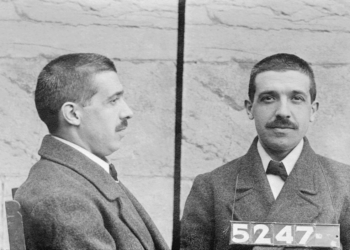
President Trump wants Senate Republicans to open the government by going around Democrats to end the legislative filibuster.
But he will have his work cut out for him to convince enough Republicans, most of whom have long-held views against blowing up the primary rule that differentiates the Senate from the House.
Senate Democrats have been filibustering a stopgap spending bill needed to reopen the government, blocking it 13 times as they demand a bipartisan negotiation over health care and extending a COVID-era expansion of Obamacare premium subsidies set to expire this year.
“Because of the fact that the Democrats have gone stone cold ‘crazy,’ the choice is clear — initiate the ‘nuclear option,’ get rid of the filibuster and, make America great again!” Mr. Trump posted on Truth Social Thursday night, using all capital letters.
This is the first time Mr. Trump has called for ending the filibuster during his second term, but he made the ask several times during his first, and Senate Republicans did not comply.
Sen. John Curtis, a Utah Republican serving his first year in the upper chamber, rejected Mr. Trump’s suggestion on social media Friday.
“The filibuster forces us to find common ground in the Senate,” he said. “Power changes hands, but principles shouldn’t. I’m a firm no on eliminating it.”
The filibuster is a tool in the Senate, most often used by the minority party, to block or stall legislation. It requires 60 votes to end a filibuster, a requirement that forces bipartisan support if the majority party does not have enough votes on its side.
It’s rare for the Senate to be controlled by a filibuster-proof majority. The last time that happened was at the start of the 111th Congress and President Barack Obama’s first term in 2009.
Senate Majority Leader John Thune, South Dakota Republican, has long opposed ending the legislative filibuster and ruled that out on Day 10 of the shutdown as an option for reopening the government.
“The filibuster protects; it’s been a voice for the minority; it gives the minority a say in what happens in this country,” he said. “The founders created the Senate uniquely that way, for that specific reason.”
Senate Republicans have a 53-seat majority, so they need at least seven Democrats to join them on legislation to overcome a filibuster.
In the case of the stopgap bill to reopen the government, Republicans need eight Democratic votes because Kentucky GOP Sen. Rand Paul opposes it. He does not support continuing the current levels of government spending.
Three senators who caucus with the Democrats — Sens. John Fetterman of Pennsylvania, Catherine Cortez Masto of Nevada and Angus King of Maine — have already been voting with Republicans to reopen the government.
It will take five more Democratic votes to overcome the filibuster and pass the stopgap.
Or it would take Mr. Trump to convince 51 Republican senators to use the “nuclear option” to end the filibuster. Using a simple majority to change the rules is called the nuclear option because it typically would take a two-thirds vote.
At least one Republican who has opposed scrapping the filibuster says he’s open to revisiting the debate since the shutdown has dragged on for a month now.
“I never really, ever seriously considered ending the filibuster until this very, very last week. There’s no doubt that ending the filibuster allows us to open the government. It allows us to plow through President Trump’s agenda, a whole lot of great things,” Sen. Roger Marshall, Kansas Republican, said Friday on Fox Business’ “Mornings with Maria.”
Mr. Marshall said the biggest argument for getting rid of the filibuster is that Democrats are likely to do it anyway next time they’re in power, but he expressed unease about Republicans doing the job for them.
“We’ve got to be careful what we wish for here,” he said. “If we do this, the next time the Democrats are in power and they can control all three levers, they’re going to nuke the Supreme Court, pack the Supreme Court, they’re going to make Puerto Rico and the District of Columbia states. They’re going to give us Medicaid for all. So, this will be a hot, hot debate right now.”
















